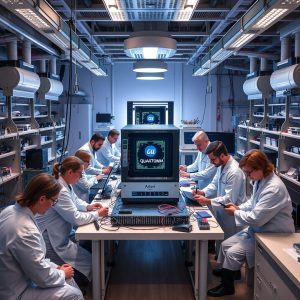
Unlocking Infrastructure Secrets: A Revolutionary Luminescent Material for Stress Monitoring
The world’s infrastructure is aging, and with it, so are our methods of monitoring its health. For decades, engineers have relied on traditional techniques to diagnose structural issues, often requiring expensive equipment and a significant amount of manpower. However, a team of researchers at Tohoku University has made a groundbreaking discovery that could change the face of infrastructure maintenance forever.
The Breakthrough: A Power-Free Solution
At the heart of this innovation is a novel luminescent material known as Pr-doped Li0.12Na0.88NbO3 (LNNO). This material exhibits a remarkable property, allowing it to record and retain information about stress events that have occurred on its surface. But how does it work? The process begins with the application of LNNO as a coating on the surface of an object, typically in the form of a thin layer.
When exposed to light from a flashlight or other light source, LNNO produces a unique afterglow effect. This effect is not just visually striking; it also holds the key to unlocking the secrets of the material’s past experiences. Researchers have found that by analyzing this afterglow, they can reconstruct the stress history of an object with remarkable accuracy.
A Revolutionary Method for Infrastructure Monitoring
The implications of this discovery are far-reaching and profound. No longer will engineers need to rely on expensive equipment or time-consuming manual inspections to diagnose structural issues. LNNO’s power-free solution makes it an attractive option for monitoring aging infrastructure, where resources are often scarce.
But the benefits don’t stop there. The study demonstrated that LNNO retains stress information even after a period of five months, making it a valuable asset in areas with limited access to power or maintenance personnel. This is especially significant in regions prone to natural disasters, where the ability to quickly assess damage and initiate repairs can be a matter of life and death.
The Future of Infrastructure Maintenance
As researchers continue to explore the full potential of LNNO, one thing becomes clear: this material has the capacity to revolutionize the field of infrastructure maintenance. Imagine being able to monitor bridges, buildings, and other critical structures in real-time, without the need for expensive equipment or labor-intensive manual inspections.
The study suggests that LNNO can be easily combined with IoT technology, enabling real-time monitoring and data analysis. This integration would not only improve our ability to diagnose structural issues but also provide a valuable window into the health of our infrastructure, allowing us to take proactive steps to prevent failures before they occur.
A New Era in Interdisciplinary Research
The discovery of LNNO is a testament to the power of interdisciplinary research. By bringing together experts from fields such as materials science, civil engineering, and computer science, researchers were able to unlock the full potential of this innovative material.
As we look to the future, it’s clear that collaborations like these will be essential for driving innovation and pushing the boundaries of what is possible. The discovery of LNNO highlights the importance of bridging disciplinary gaps and exploring new frontiers in research.
A Brighter Future Ahead
The world of infrastructure maintenance has been forever changed by the discovery of LNNO. This revolutionary material offers a glimpse into a brighter future, one where our critical structures are monitored with ease and precision, allowing us to prevent failures and ensure public safety.
As researchers continue to explore the full potential of LNNO, it’s clear that this is just the beginning of an exciting new chapter in infrastructure monitoring. With its power-free solution, real-time monitoring capabilities, and unparalleled accuracy, LNNO is poised to revolutionize the field forever.







As I reflect on the article about the luminescent material for stress monitoring, I am reminded of my own experience as a dentist dealing with complex oral health issues. While the concept of a power-free solution for infrastructure monitoring may seem revolutionary, I have my reservations about its applicability to real-world scenarios.
Firstly, I question the material’s ability to withstand various environmental factors such as temperature fluctuations and exposure to corrosive substances that are common in infrastructure settings. My experience with dental materials has taught me the importance of considering these factors when evaluating a new substance’s efficacy.
Secondly, I am skeptical about the long-term durability of this luminescent material. How well will it hold up under repeated stress cycles? What kind of maintenance would be required to ensure its continued accuracy and reliability?
Lastly, as a dentist, I have seen firsthand how even the most advanced technologies can fall short in real-world applications due to unforeseen complications or limitations. While LNNO may offer some benefits, I believe we should exercise caution before embracing it as a panacea for all our infrastructure woes.
As an expert in dental materials science, I would recommend that researchers consider conducting further studies on LNNO’s durability and long-term performance under various environmental conditions before touting its potential for widespread adoption.
Gavin raises some valid concerns about the luminescent material’s ability to withstand environmental factors and its long-term durability. As I read his comments, I am reminded of the recent bridge collapse in Miami due to structural fatigue. It’s a sobering reminder of the importance of rigorous testing and evaluation before deploying new technologies in critical infrastructure applications.
While LNNO may offer some benefits in terms of power-free monitoring, we must not overlook the potential risks associated with its use. Gavin’s expertise in dental materials science is invaluable in this regard, and I agree that further studies are necessary to fully understand the material’s performance under various conditions.
In fact, today’s news about a major pipeline rupture highlights the need for more robust and reliable infrastructure monitoring solutions. As we move forward with LNNO, let’s prioritize caution and thorough testing to ensure its safety and efficacy in real-world applications.
Gavin, it’s great to see you chiming in with your expertise as a dentist, but I have to say, I find some of your arguments to be a bit…enlighteningly irrelevant.
While I understand your concerns about the material’s durability and its potential limitations in real-world scenarios, I think we need to take a step back and consider the bigger picture here. The article is talking about a luminescent material for stress monitoring, not some revolutionary new toothpaste.
And let’s be real, Gavin, if this material can’t withstand temperature fluctuations and corrosive substances, then maybe it’s not suitable for infrastructure settings. But what about its potential applications in areas like healthcare or biotechnology? Don’t those count?
As I’m reading your comment, I’m reminded of the latest news about Google and Microsoft’s cold war heating up over cloud computing dominance. Now, that’s a real-world scenario where technology is being used to shape our global landscape.
So, let’s not get too bogged down in hypothetical concerns about this material’s durability. Let’s focus on its potential benefits and how it can be applied to various fields, including those outside of infrastructure monitoring.
And by the way, Gavin, I’m curious – have you ever thought about collaborating with researchers in materials science or engineering? Your expertise as a dentist could bring some valuable insights to these fields.
In any case, I think we should be careful not to dismiss new technologies like LNNO without giving them a fair shot. After all, history has shown us time and again that the most seemingly far-fetched ideas can lead to revolutionary breakthroughs when given the chance.
I completely agree with the post about the luminescent material for stress monitoring. This discovery has the potential to transform the way we monitor our critical infrastructure, making it safer and more efficient. I’m curious to know how this technology will be implemented in real-world scenarios, especially in areas with limited access to power or maintenance personnel. Will it be possible to integrate LNNO with existing infrastructure monitoring systems?
Congratulations to the author on this groundbreaking article! Your work has shed light on a truly revolutionary discovery that has the potential to transform the way we monitor our infrastructure. The concept of a power-free luminescent material like Pr-doped Li0.12Na0.88NbO3 (LNNO) is fascinating, and its ability to record and retain information about stress events is nothing short of remarkable.
I must say that I’m particularly impressed by the potential applications of LNNO in areas with limited access to power or maintenance personnel. This technology could be a game-changer for regions prone to natural disasters, where quick assessments and repairs can mean the difference between life and death.
As you’ve noted, the future of infrastructure maintenance is looking brighter than ever, thanks to this discovery. The integration of LNNO with IoT technology holds tremendous promise for real-time monitoring and data analysis, allowing us to prevent failures before they occur.
I’d love to hear more about the specifics of how LNNO works at a molecular level. What exactly triggers the afterglow effect, and how is it that researchers can reconstruct the stress history of an object with such remarkable accuracy?
Also, I’m curious to know if there are any plans to scale up production of LNNO for widespread use in infrastructure monitoring. Could this technology be adapted for use in other areas beyond just structural health monitoring? The possibilities seem endless, and I’d love to hear your thoughts on the future directions of research in this area.
Once again, congratulations on a truly groundbreaking article! Your work has inspired me to learn more about this fascinating topic, and I look forward to following the developments of LNNO as it continues to revolutionize the field of infrastructure maintenance.
Great points, Trinity! It’s indeed exciting to see how LNNO can be used in areas with limited access to power or maintenance personnel. Today, as we witness the devastating effects of natural disasters like hurricanes and wildfires, this technology could not have come at a better time. I also appreciate your curiosity about the molecular level of LNNO – it’s crucial to understand the underlying mechanisms that enable its remarkable stress monitoring capabilities.